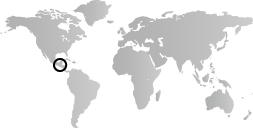Mayapan and its confederacy disintegrates. Political power in northern Yucatan reverts to provincial centers, often at war with each other. Coastal Caribbean regions with rich marine resources experience population growth. Mercantile activities and maritime trade form the economic basis for many small, independent centers. In the central Maya area, the Petén lowlands remain sparsely populated. In the Guatemalan highlands, the K’iche’ are still the most numerous and powerful group. Other independent groups, occupying fortified hilltop strongholds, feud over territory, access to resources, and trade routes. Art and architecture continue to manifest strong central Mexican influence in imagery and style, without the artistry and sophistication found in Mexico. Ceremonial and elite residential architecture throughout the Maya region is roughly constructed of uneven stonework covered with heavy layers of plaster, often carrying fresco murals. Incense burners, many of large size and multipiece construction, are mass-produced for use in public and private rituals.
In the early sixteenth century, Spaniards sailing from the Caribbean islands arrive on the coast of Yucatan. Others coming from Mexico penetrate the southern Maya area. The Captaincy-General of Guatemala is established under the jurisdiction of the Viceroyalty of New Spain.
